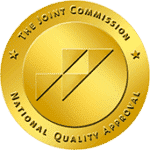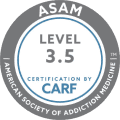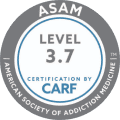Fentanyl, a powerful synthetic opioid, poses a grave threat in the United States because of its involvement in the opioid crisis. Regardless of whether you are personally battling with fentanyl usage or are trying to help others, everyone has to be aware of harm reduction techniques. Medication-assisted treatment and Narcan nasal spray can effectively reverse Fentanyl overdoses.

The fentanyl epidemic is explained in this article. We can address this pressing issue by working together.
Key Takeaways
The fentanyl overdoses have significantly contributed to the opioid crisis. This dangerous substance has caused a staggering increase in fatalities. Here is what you need to know:
- Naloxone (Narcan) is the key tool in saving lives during fentanyl overdose emergencies.
- Fentanyl test strips provide critical information for harm reduction and safety.
- One potent strategy to prevent fentanyl-related harm and fatalities is to combine widespread awareness, naloxone distribution, and fentanyl testing.
The Haven Detox-New England provides comprehensive addiction treatment and support. Contact us at (844) 933-4145 to combat this deadly epidemic.
Prevalence of Fentanyl
The potent synthetic drug fentanyl has dominated the growing opioid crisis in America. This deadly substance, first created for medical purposes, has entered the illicit drug market and is responsible for a shocking rise in overdose fatalities.
The Centers for Disease Control and Prevention (CDC) estimates that 64,000 people died from opioid overdoses in the United States in 2016, with fentanyl significantly contributing to this statistic. It is a deadly addition to the supply of illegal drugs due to its potency, which is thought to be 50 to 100 times stronger than morphine.
Government agencies like the DEA monitor drug trafficking, but combatting fentanyl’s increase still seems challenging. Harm reduction tools, including naloxone, and public awareness campaigns are essential in the fight against this issue.
Risks of Fentanyl Use
Using fentanyl can have consequences for those who use it. It’s vital to grasp the risks it poses to individuals, their loved ones, and the wider community.
Short-Term Effects
Fentanyl can induce feelings of euphoria that are intensely addictive. One must admit that one of the immediate results is reduced breathing, which makes it difficult for a person to breathe air to live, resulting in death. In addition, fentanyl usually causes drowsiness, impairs coordination, and confuses people so they cannot decide properly.
Long-Term Effects
Continuous use of this substance can build up a tolerance and require larger quantities for the same effect. One can be physiologically used to it, making an individual suffer from withdrawal symptoms if they stop using it. On the other hand, long-term usage may produce health challenges like problems with the heart and heartbeat and gastrointestinal disorders.
Social and Psychological Effects
Family and friends might not be involved after misuse of fentanyl as its use can be secretive, leading to high levels of emotional instability. One can also stop interacting with others while seeking to enhance their perception through the use of drugs. Furthermore, purchasing fentanyl is expensive and may bring monetary losses. However, employing them creates legal barriers.
Overdose Risk
Fentanyl is favorably dangerous due to its potency, which makes overdose likely. Several risk factors lead to this risk, including:
Inconsistent Purity: Fentanyl bought on the street often varies in purity, making it difficult to determine a safe dosage.
Mixing with Other Substances: Combining fentanyl with other drugs, such as alcohol use or benzodiazepines, significantly increases the risk of overdose.
Unpredictable Response: Everyone reacts differently to fentanyl, making it hard to predict a safe dosage.
Delayed Effects: The impact of fentanyl may not manifest immediately, leading individuals to consume doses unknowingly and without understanding the potential risks involved.
The use of this substance is dangerous both in the short and long run, affecting social and psychological betterment negatively. Besides, it makes one very prone to an overdose. One should approach for help, adopt various ways of moderating their use of fentanyl, and know its impacts.
Fentanyl Harm Reduction Strategies
Drug overdose and substance use are tackled through anti-harmful policy development, such as harm reduction programs and community-based initiatives. These therapists advocate for evidence-based harm reduction strategies, aiding substance-dependent persons.
Test strips, such as FTS, aid in the detection of harmful compounds such as fentanyl in illicit narcotics, resulting in promising findings in the prevention of drug overdoses. These projects frequently partner with local health agencies and clinical settings to provide overdose prevention education, medical care, and recovery support.
They work together to tackle the opioid crisis, viral hepatitis, and the destructive effects of drug abuse. It paves the way for a safer path to recovery.
Harm reduction strategies are crucial in reducing the dangers associated with its consumption to address the escalating fentanyl crisis. Such measures aim to decrease harm, prevent overdosing, and encourage safer habits among fentanyl users.
Naloxone Overdose Response
Naloxone, commonly known as Narcan, is essential for preventing fatal fentanyl overdoses. It functions by swiftly reversing the impacts of opioid overdose, thereby restoring regular breathing. Naloxone must be easily accessible to people who use drugs and their communities. It is also important to receive instruction on its application to ensure swift and effective action in emergencies.
Needle and Syringe Programs
Programs for exchanging needles offer clean needles and syringes to those who inject drugs, including fentanyl. These programs help to lower the chance of contracting HIV and other bloodborne infections. They also provide a way to reach individuals who use drugs and educate them about necessary health resources and ways to reduce harm.
Opioid Agonist Therapy
Treating opioid addiction, including fentanyl, can be done through opioid agonist therapy (OAT) with medications like methadone and buprenorphine. These medications can reduce withdrawal symptoms, leading to stability in one’s life. Expanding access to OAT is crucial for more people to benefit.
Overdose Prevention Sites
Overdose prevention sites OPS refer to safe injection sites, also known as supervised consumption facilities. The users can use drugs in a secure and contained environment under medical supervision.
OPS seeks to stop overdose deaths and allow people to access health care, medication-assisted treatment, and counseling. Legal and political hurdles have been encountered by OPS in several regions, even with its advantages.
Access to Treatment
Access to addiction treatment and rehabilitation services is crucial for reducing harm caused by drug abuse. Those grappling with fentanyl use disorder require prompt and reasonably priced treatment alternatives, such as counseling, detoxification, and long-term rehabilitation programs.
Expanding these services can help individuals break the cycle of addiction. We can reduce the devastating impact of fentanyl on individuals and communities by prioritizing harm reduction and support.
Importance of Awareness in Harm Reduction Strategies
It is crucial to highlight the significance of education and awareness in reducing harm, mainly when managing the fentanyl crisis in the United States. With education, people, families, and communities can understand fentanyl and make informed decisions.
Education makes them aware of the substance’s potency, the chances of an overdose, and the dangers of mixing the drug with others. People can then choose wisely and ask for help.
There is no stigma in addiction if one obtains knowledge of it. Knowing that addiction is a medical condition. In addition, educating people also promotes the implementation of harm reduction strategies such as giving out naloxone or using needle exchange programs.
Frequently Asked Questions (FAQ)
What is a life-saving drug for fentanyl?
Naloxone, commonly called Narcan, is a medication for combating fentanyl-related emergencies. Its primary function is to reverse the effects of overdoses. However, equally important is its role in preventing these overdoses from occurring in the instance.
Fentanyl, often present in heroin, counterfeit pills, or other substances, poses a grave risk to the body due to its potency. Fentanyl test strips can provide information about its presence, enabling harm reduction services to intervene.
Combining naloxone distribution, testing, and awareness is a powerful approach to safeguarding individuals struggling with fentanyl addiction and overdose.
Get Substance Abuse Treatment at The Haven Detox-New England
If you are struggling with substance use disorder, we provide lifeline services.
Our detox services prioritize your safety during withdrawal, while residential treatment programs offer intensive, personalized care for lasting recovery.
Contact us at (844) 933-4145 and our experienced team and evidence-based approaches will help you toward lasting sobriety.



